Resources
WHEN MATH TELLS A STORY
By DGS Office
Wednesday 12-11-2025

Math at DGS is not just about formulas or calculations. Through the eyes of students, every cup of coffee, each staircase, or the curve of a building becomes a vivid, engaging, and meaningful mathematical story.
This approach is especially evident in AP Precalculus projects, where 10th graders tell their own stories using the language of mathematics. Some students analyze the structure of the Golden Gate Bridge, using polynomials to model forces, angles, and the curves of steel beams and support systems. Others create a virtual Family of Functions Museum or study The Wave building and a double-helix staircase through 3D geometry and coordinate transformations. Even everyday phenomena, like the way coffee temperature approaches room temperature without ever fully reaching it, are illustrated as a horizontal asymptote.
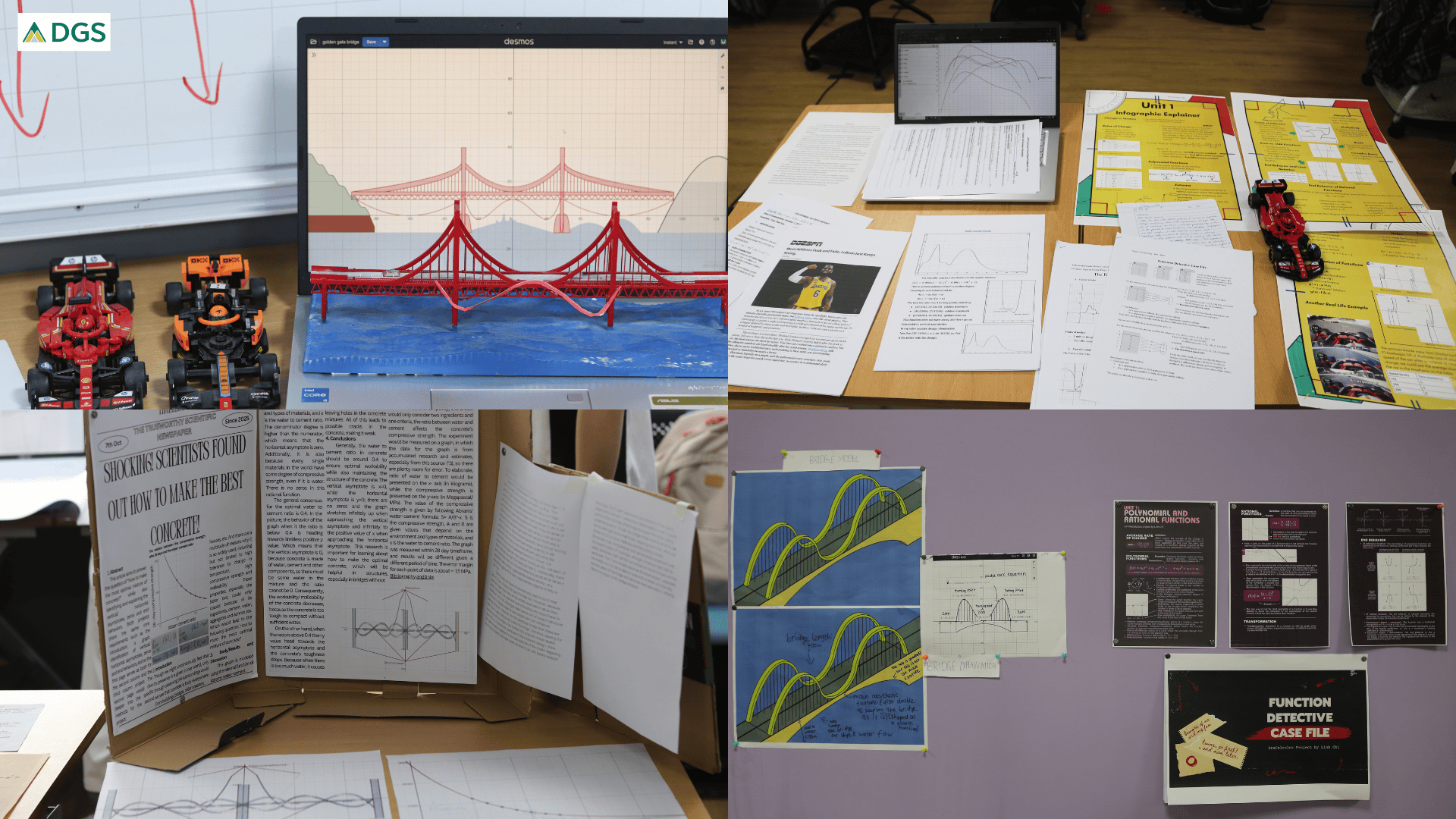
Ms. Laura Royster, AP Precalculus teacher, shares “Across the project cycle, students moved from “doing problems” to posing and defending models. I saw real risk-taking: students swapped linear starts for better-fit exponentials. The final pieces felt like math with a heartbeat: elegant visuals, readable annotations, and claims you could test. I was proud to see students justify choice. Their explanations became tighter, with clearer domain restrictions, units, and “what this means in the real world” statements. In short, the growth was intellectual (better models), mathematical (cleaner reasoning), and communicative (audience-aware stories with evidence).
Most importantly, their projects invited conversation; you could walk up cold and still understand the story the math was telling. That’s the mark of learning that travels beyond the classroom.”
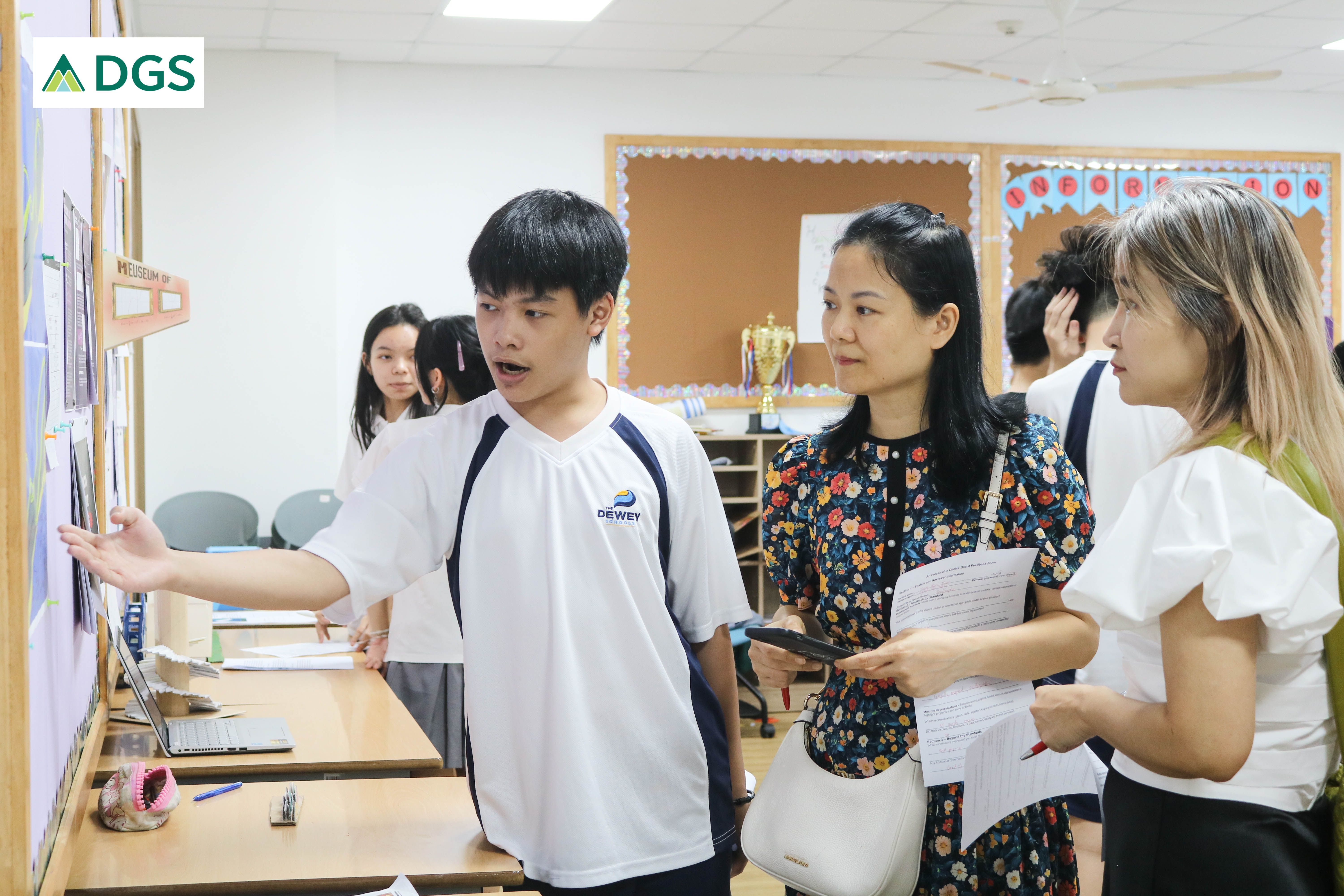
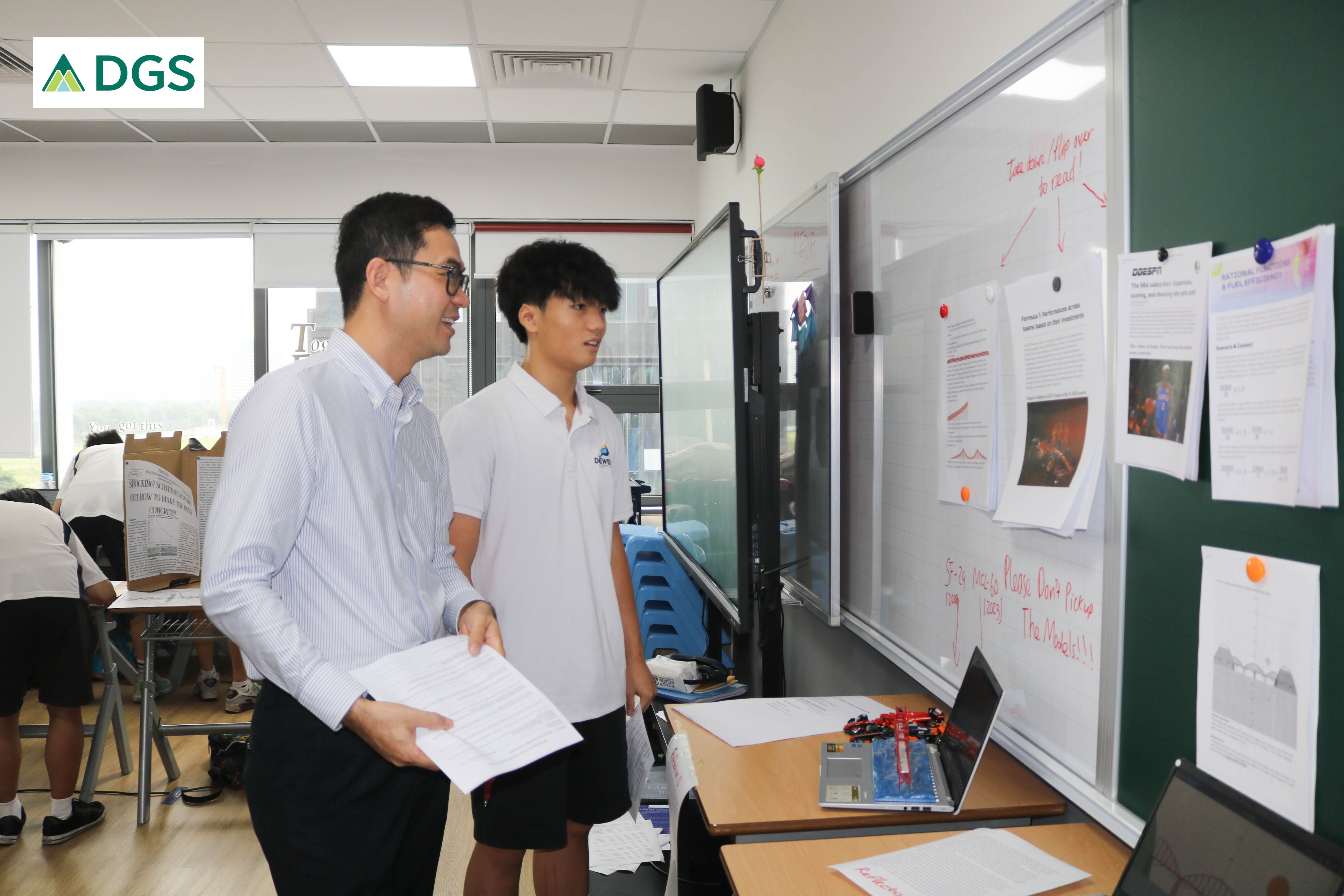
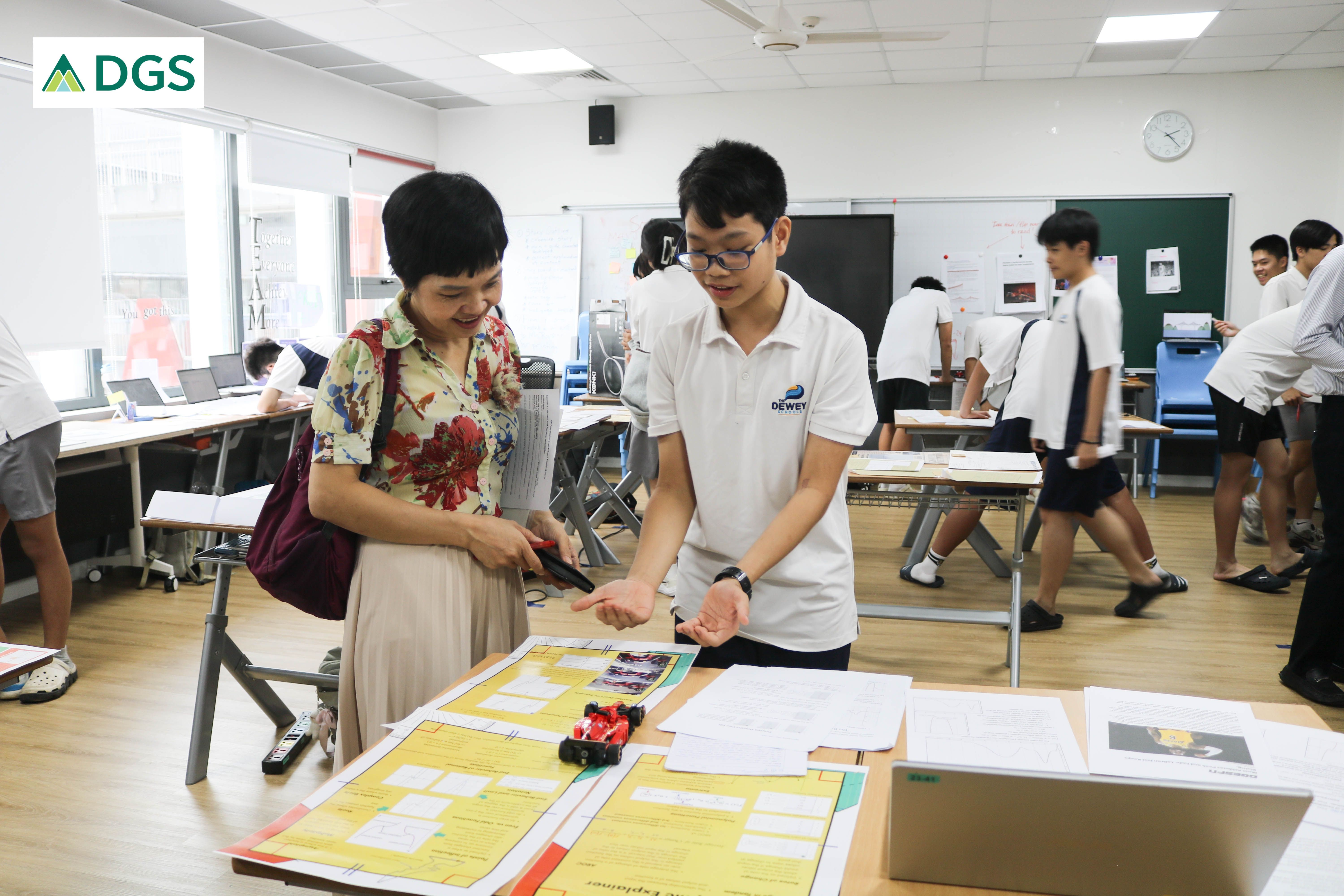
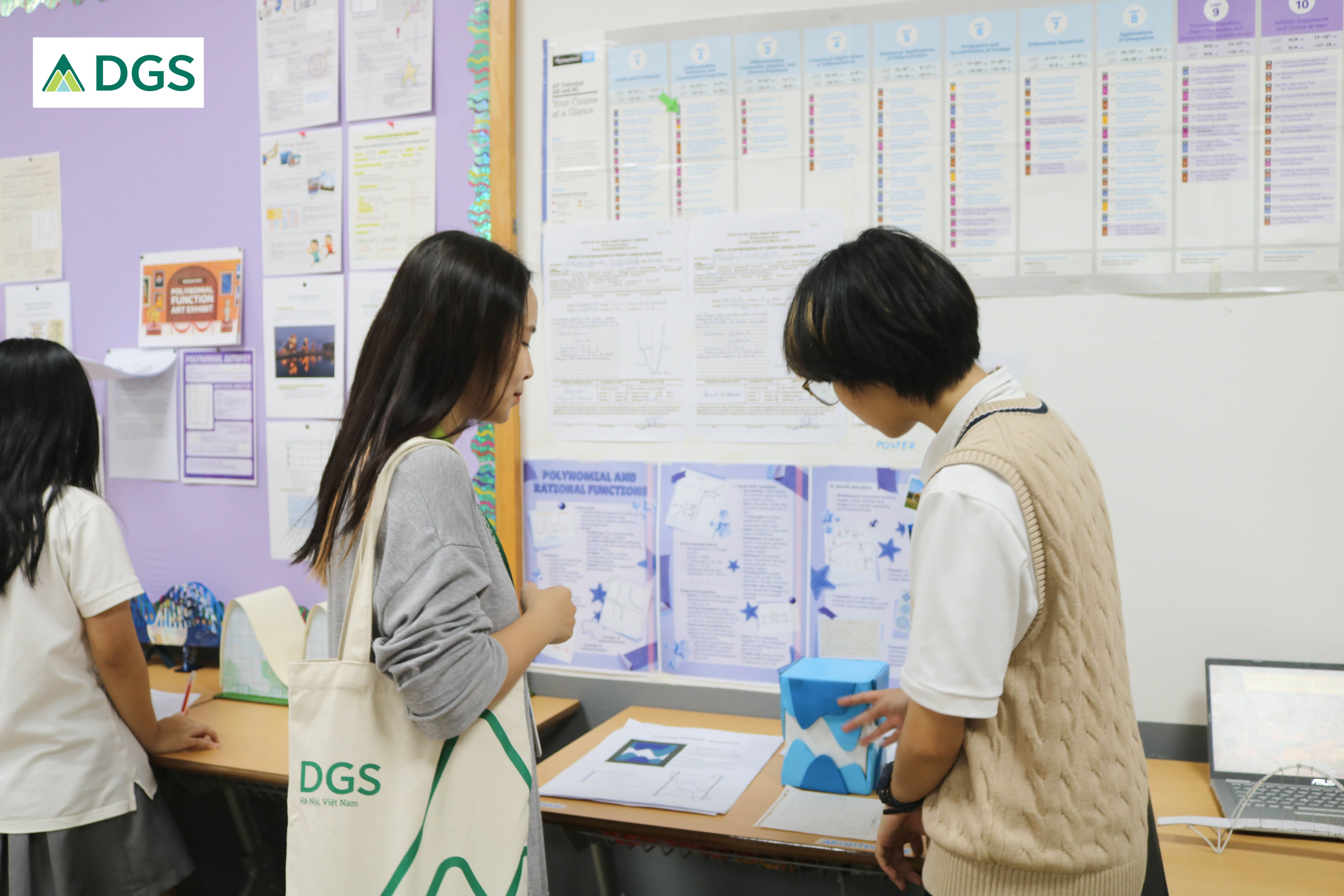
This spirit continues during World Statistics Day. It might sound “dry,” but at DGS, it’s truly a celebration. Students solve Rubik’s cubes, roll dice, debate, design posters, infographics, and slogans. Beneath these playful activities lies the application of statistical knowledge: averages, variance, probability, charts to choose the right models, analyze results, and tell a story with data. Through this, students not only understand data but also learn to make informed decisions and present information persuasively.

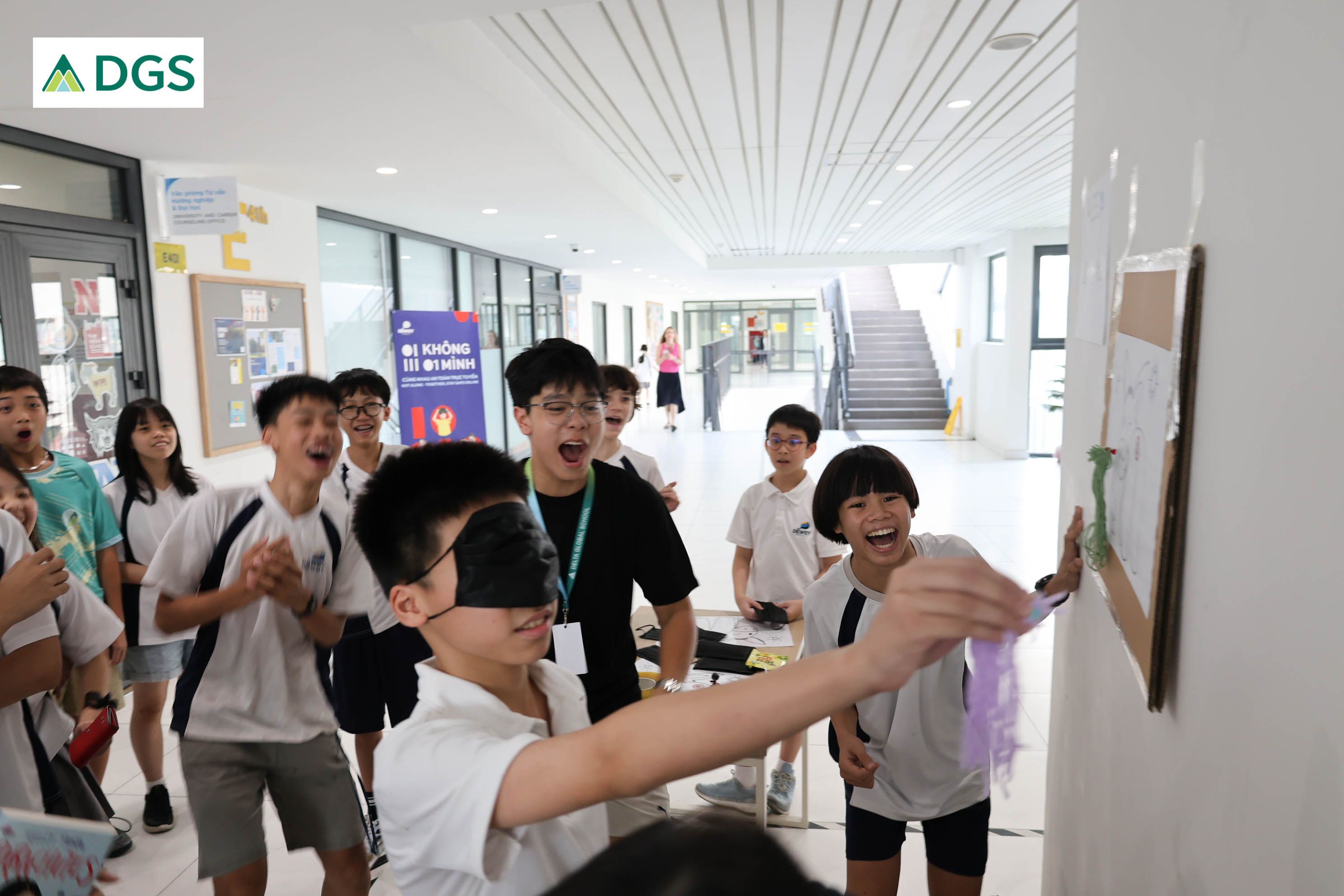
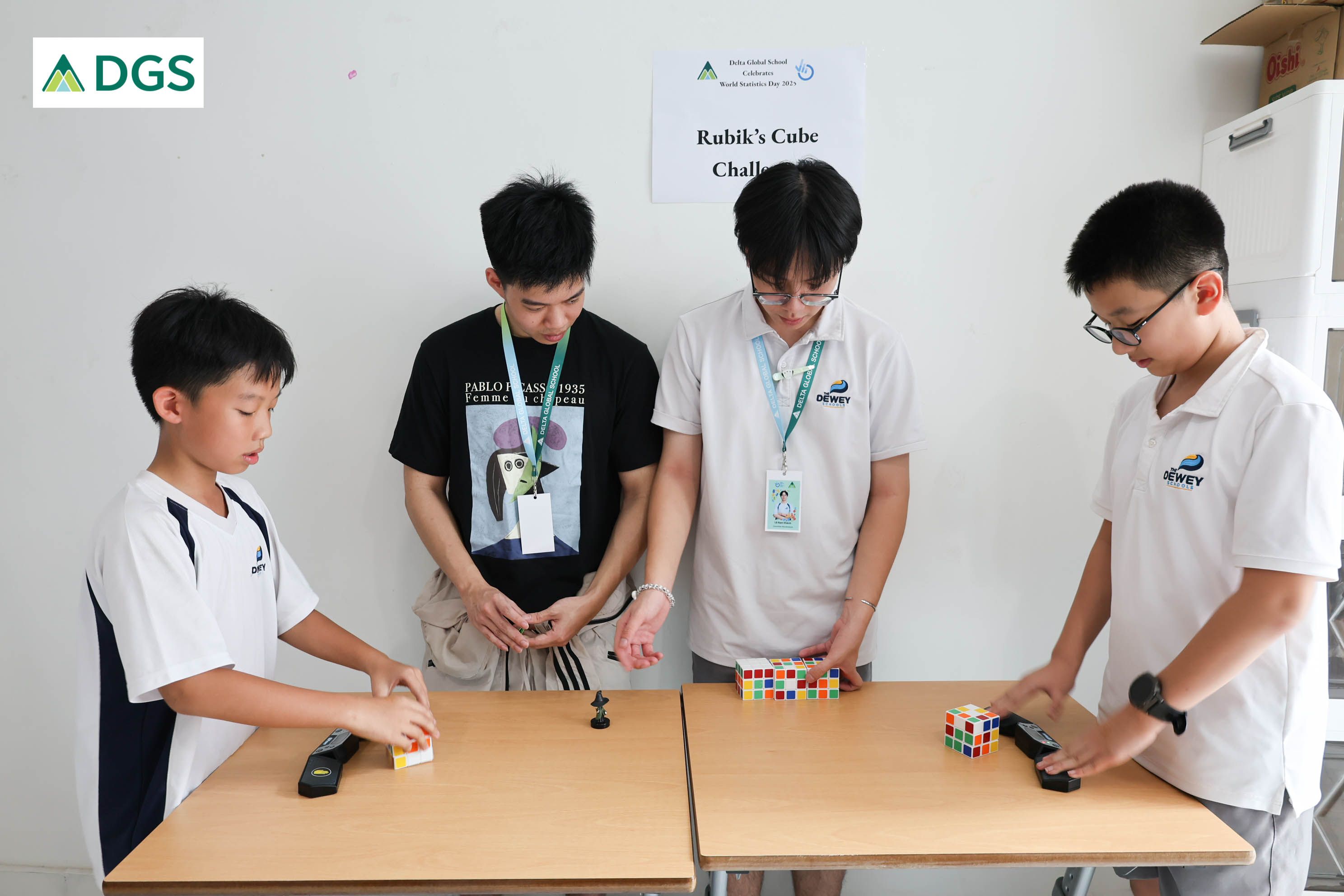

At DGS, math becomes a living, real-world experience, personalized and nurturing the thinking, creativity, and character of every student.
